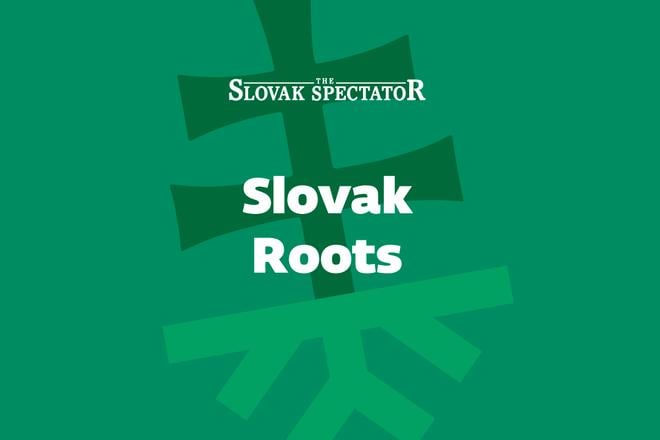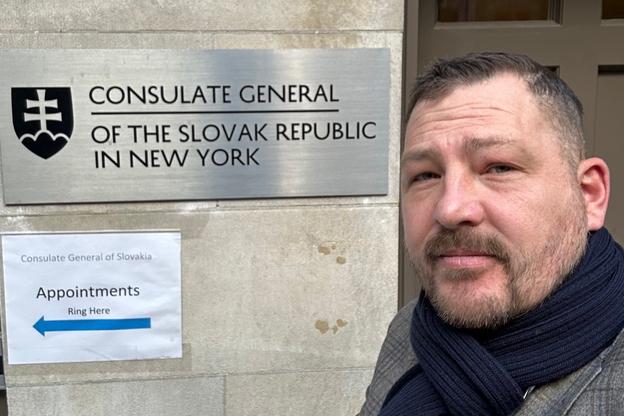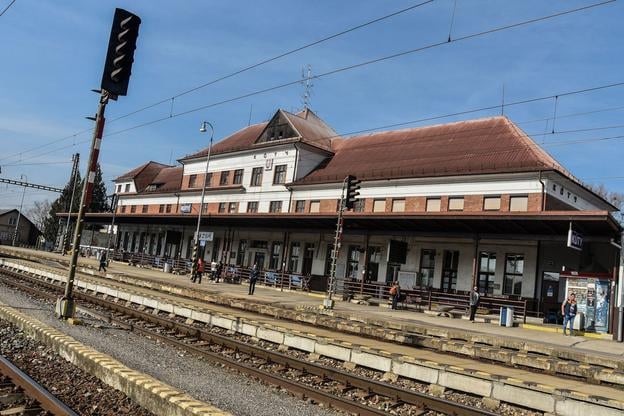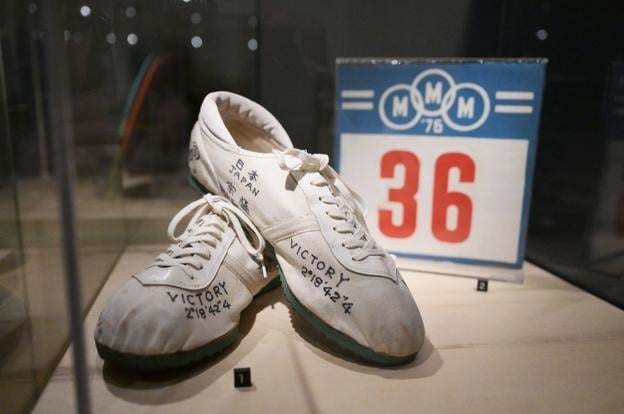Welcome back Slovak Roots fans!
It is time for another edition of our Slovak Roots newsletter, dedicated to the community of people with ties to Slovakia.
In this newest instalment, you'll get to meet Slovak American Benjamin Demko and learn how his feeling of being in the middle of two worlds and not belonging to either spurred him to claim what he knew he had.
Our colleague Jozef Ryník visited the Senica district in western Slovakia, mapping its daily life and compiling a travel guide. And finally, you’ll learn how an idea born from a passion for running turned from eight runners at the beginning to now thousands.
Caught in the middle
Growing up, Slovak American Benjamin Demko never quite felt like he fully belonged. Not to the Slovak community - as he was surrounded by the culture, festivals, foods, the church - nor completely to American life either. There was a kind of quiet distance on both sides.
"I didn't speak Slovak, but I also I was different than a lot of the kids I grew up with because either their ancestors were from different parts of Europe, or had been in the United States for generations," he says, adding that it was almost like trying to balance between two different worlds with him in the middle.
This feeling of floating between two worlds eventually played a big part in Demko deciding to seek Slovak citizenship when the government allowed it in 2022. He wanted to reconnect, to understand, to claim something he knew he had.
Kúty will not sit in the corner quietly
"We are not on the outskirts or in a corner; we are in the centre of a prosperous region. If you hold a compass in your hand, you'll find that within a 30-kilometre radius, we have Malacky, Skalica, Senica, the Austrian town of Hohenau, and the Czech town of Břeclav. A bit further away are Bratislava and Brno," explains Branislav Vávra, the mayor of the village of Kúty, the name of which means corners and is derived from its position at the confluence of the Morava and Myjava rivers, as well as at the borders of three countries.
As such, it's not just tourists that flock to the village, it's also people seeking affordable rental housing.
Our colleague Jozef Ryník recently visited the area, looking to learn more about daily life as well as to visit various sites. The whole Senica district, in which the village is located, offers quiet revelations, from curative waters to forgotten chapters of Jewish life.
Rising to the top
Here's a quick quiz question. Where is the oldest traditional marathon in Europe held? Would you guess maybe London or Paris, perhaps Berlin? It's actually in Košice, eastern Slovakia!
Established in 1924, it is also the third oldest in the world after the Boston (1897) and Yonkers (1907) marathons. It has grown significantly ever since, with thousands of athletes from countries all over the world participating in the run that now takes them through the historic city centre.
It owes its origin to the 1924 Summer Olympics in Paris.
A selection of feature stories published by The Slovak Spectator that we recommend reading:
Jonathan Lukca, a pilot from Montreal, Canada, has recently become a Slovak citizen along with his three children. He is the first Francophone applicant from Canada to be granted citizenship by descent.
Forget the 1997 Titanic movie. This is a real love story featuring a woman from Slovakia that served on board the Carpathia, which rushed to help the famous liner. Her story was unknown until recently.
Eugen Rosenberg helped shape post-war Britain with landmark buildings across the UK, including Gatwick Airport. Yet his most intimate creation stands quietly in a small Slovak town.
Underground vampires are taking over Slovakia one rave at a time. Forget the garlic — this blood-soaked party scene is fuelled by roleplay, passion and a very strict dress code.
Whether you’re lacing up your hiking boots, strapping on a bike helmet or simply chasing stories hidden in the landscape, Turiec — a quietly captivating region in central Slovakia — has a knack for surprising even the most seasoned traveller.
Increasingly dire reports have been piling up for months now about the near-impossibility of even getting through the door of the Foreigners' Police offices, which are the only places able to issue IDs to non-Slovak residents. The problem is, ironically, being caused by a development that was supposed to make the process easier.
In the heart of Bratislava's Nové Mesto district, in the post-industrial sprawl known as Dynamitka (a nickname derived from its past as a dynamite factory), one man has been quietly building his concrete palace. Once home to a factory, what's happening here today might be just as explosive.
Would you like to share your story with us? Did you enjoy the newsletter? I would love to hear your thoughts, questions and feedback: matus.beno@spectator.sk or spectator@spectator.sk.


 (source: Hej, Ty!)
(source: Hej, Ty!)
 Benjamin Demko. (source: Archive of B. D.)
Benjamin Demko. (source: Archive of B. D.)
 The train station in Kúty was finished in 1930. (source: TASR)
The train station in Kúty was finished in 1930. (source: TASR)
 Running shoes that belonged to Japansese runner Takeshi So who won the marathon in 1976. (source: TASR)
Running shoes that belonged to Japansese runner Takeshi So who won the marathon in 1976. (source: TASR)